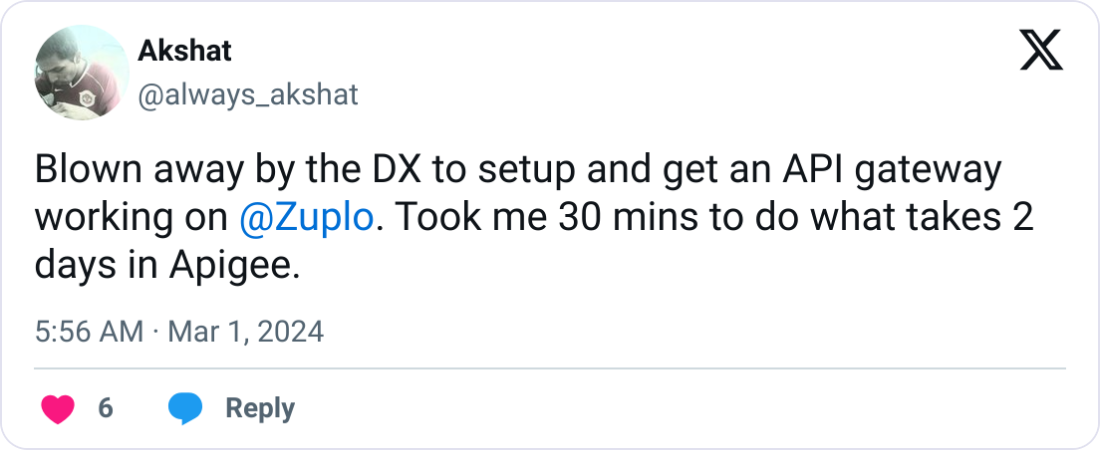APIs have evolved from technical connectors into genuine revenue engines that transform business growth trajectories. Strategic partner integrations create multiplier effects that convert cost centers into profit generators while building ecosystem advantages your competitors can't easily replicate.
The revenue potential remains massive yet frequently overlooked. Forward-thinking companies generate significant portions of their revenue through API partnerships, some producing billions in transaction volume without direct monetization. These success stories stem from deliberate strategies positioning APIs at the center of partner ecosystems. Let's talk about how you can transform your API program into a sustainable revenue powerhouse.
- Turning Code into Cash: Understanding the API Monetization Landscape
- Blueprint for Success: Strategic Frameworks for Partner Integrations
- Building Your Dream Team: Crafting a Partner Ecosystem Strategy
- Beyond Code: Implementing Successful Partner Integrations
- Measuring What Matters: Partnership ROI and Performance
- Overcoming Partnership Roadblocks: Solutions That Work
- The Future is Now: Emerging Trends in API Partnerships
- Your Roadmap to API Partnership Success
- Ignite Your Growth Engine: The Path to Partner Success
Turning Code into Cash: Understanding the API Monetization Landscape#
Gone are the days when APIs were mere plumbing—today's strategic APIs are gold mines waiting to be tapped. Companies across industries are shifting from treating APIs as infrastructure expenses to viewing them as direct profit centers with massive growth potential.
The current API monetization landscape includes several proven approaches:
Pay-Per-Use Pricing#
Twilio charges based on API calls for communication services, creating a direct link between usage and revenue that scales elegantly with customer growth.
Subscription-Based Models#
Salesforce offers tiered API access through different subscription levels, providing customers flexibility while ensuring predictable revenue.
Transactional Approaches#
Stripe charges per transaction processed through its payment API, aligning its success directly with customer outcomes.
Freemium Strategies#
The classic foot-in-the-door approach offers basic access for free while charging for premium features that developers eventually can't resist. This model is also prevalent in AI API monetization, where basic machine learning services are offered free, with charges for advanced features.
The real game-changer has been the explosive growth of partner ecosystems. eBay's "Buy APIs" showcase this brilliantly—offered for free, these APIs generate billions in merchandise value by enabling partner integrations that indirectly benefit eBay's core business.
Despite the massive opportunity, companies face common challenges including limited adoption, difficulty demonstrating value, standing out in crowded marketplaces, and managing unpredictable usage volumes. Understanding these challenges is essential for companies looking to capitalize on their digital capabilities through strategic partner integrations.
Blueprint for Success: Strategic Frameworks for Partner Integrations#

The right partnership models can turbocharge your API business growth and create sustainable revenue streams. Based on successful API companies, three partnership frameworks consistently deliver results, each with unique strengths and implementation requirements.
Direct Monetization Partnerships#
These partnerships create immediate, measurable revenue through direct financial transactions:
Revenue-Sharing Models#
Partners receive a commission (typically 15-30%) for customers they bring to your API platform. Stripe’s partner program exemplifies his approach, offering partners up to 25% of revenue generated from referred customers for the first year, with automatic payouts and transparent reporting.
Reseller Arrangements#
Partners purchase your API services at wholesale rates and sell them to end customers at a markup. Tiered programs based on sales volume with increasing benefits create incentives for partners to scale their sales efforts.
White-Label Solutions#
You provide API functionality without your branding, enabling partners to present the service as their own offering, commanding premium pricing while creating higher-value, long-term partnerships.
Indirect Monetization Partnerships#
These partnerships drive value through ecosystem expansion rather than direct revenue sharing:
Complementary Service Integrations#
Creating technical connections between your API and complementary services enhances both offerings, increases product stickiness, and drives organic adoption through partner user bases. A practical example is integrating sports data into applications to enhance user engagement and provide real-time information.
Platform Partnerships for Visibility#
Listing your API on platform marketplaces, app stores, or directories increases discoverability and taps into established user bases with minimal marketing investment.
Ecosystem Access Partnerships#
Salesforce's AppExchange generates over $17 billion annually for partners who build on their platform, providing access to enterprise customers and creating natural upsell opportunities.

Over 10,000 developers trust Zuplo to secure, document, and monetize their APIs
Learn MoreEmerging Partnership Models#
These innovative approaches represent the cutting edge of API ecosystem development:
Data Monetization Collaborations#
Partners contribute and access aggregate data through APIs, creating unique insights unavailable individually. Amazon AWS enables data sharing between partners through its marketplace, creating ecosystems of data providers and consumers with shared revenue models.
Industry-Specific API Partnerships#
Integrating deeply with industry-specific systems addresses unique vertical challenges, commanding premium pricing for specialized functionality in sectors like healthcare, finance, and logistics.
Innovation-Focused Collaborative Development#
Joint development efforts with strategic partners build novel capabilities neither could create alone. Microsoft Azure actively engages partners in co-development initiatives, providing technical resources and co-marketing support to drive shared innovation.
The most successful API businesses typically employ multiple partnership models simultaneously, creating a diversified approach to market expansion and monetization that delivers sustainable growth.
Building Your Dream Team: Crafting a Partner Ecosystem Strategy#
Creating a successful partner ecosystem for your API can dramatically transform your revenue potential. With the right strategy, your partner network can become your most valuable business asset, driving adoption and unlocking new markets.
Assessing API Partnership Potential#
Before diving into partnerships, evaluate your API's readiness:
- Value Proposition Assessment: Identify unique capabilities that partners can't easily replicate elsewhere.
- Market Opportunity Analysis: Research potential integration partners whose customers would genuinely benefit from your API.
- Organizational Readiness: Honestly evaluate your technical infrastructure, support capabilities, and documentation quality.
Designing Partner Program Architecture#
Structure your partner program for maximum impact:
- Tiered Partnership Structure: Create distinct partnership levels with increasing benefits and requirements, providing entry points for different partner sizes.
- Technical Integration Requirements: Clearly define authentication methods, rate limits, and provide SDKs to simplify integration.
- Revenue Models: Design financial arrangements that benefit both sides, from revenue sharing to tiered pricing based on usage volume.
Creating Robust Partner Governance#
Establish clear governance to maintain trust and ecosystem health:
- Service Level Agreements: Define uptime guarantees, support response times, and remediation processes.
- Data Governance Framework: Specify data usage permissions, privacy controls, and security requirements.
- Partner Conflict Management: Develop strategies for handling overlapping partner interests with transparent rules.
By thoughtfully implementing these components, you can build an API partner ecosystem that drives significant value.
Beyond Code: Implementing Successful Partner Integrations#
Creating successful API partner integrations requires careful planning across three critical areas: technical foundations, partner enablement, and performance management. The best implementations focus equally on technical excellence and partner experience.
Technical Considerations for Partner-Friendly APIs#
Your API's technical foundation is crucial for partner adoption:
- API Design Best Practices: Implement RESTful principles with consistent, logical endpoint structures and proper error handling with meaningful status codes.
- Documentation Excellence: Provide interactive documentation with practical code examples in multiple programming languages.
- Versioning Strategies: Implement semantic versioning and maintain backward compatibility wherever possible to preserve partner trust.
Leveraging a hosted API gateway can further streamline these processes, providing built-in features for versioning and backward compatibility.
Partner Onboarding and Enablement#
A streamlined onboarding process dramatically increases adoption rates:
- Simplified Onboarding Process: Create a self-service registration portal that generates API credentials quickly and implement a "quick start" guide aimed at success in under 5 minutes.
- Support Resources: Develop comprehensive knowledge bases, video tutorials, and dedicated support channels for integration partners.
- Self-Service Capabilities: Implement dashboard analytics where partners can monitor usage in real-time and manage their subscription tiers independently.
Performance Monitoring and Optimization#
Continuous monitoring and improvement are essential for long-term partnership success:
- Key Metrics to Track: Monitor API response times, availability percentages, error rates, feature adoption rates, and revenue generation per partner. Using suitable API monitoring tools can help in tracking these metrics efficiently.
- Analyzing Usage Patterns: Implement analytics to identify peak usage times, most frequently used endpoints, and unusual patterns that may indicate issues or new use cases.
- Continuous Improvement Processes: Establish regular review cycles, clear processes for feature requests, and performance-focused SLAs that align with partner business needs.
Companies like Salesforce have demonstrated the value of these approaches, with APIs driving half their revenue through successful partner integrations. By implementing these strategies, you'll create an API ecosystem that both attracts partners and maximizes relationship value.
Measuring What Matters: Partnership ROI and Performance#
Implementing a robust measurement framework is essential to understand the true value of your API partnerships. The most successful API programs go far beyond simple usage statistics to capture the complete picture of partnership value.
Financial Metrics That Tell the Full Story#
- Partner-Attributed Revenue Tracking: Implement unique tracking parameters for each integration to directly attribute revenue, with conversion funnels to monitor user journeys.
- Partnership Costs: Calculate direct costs like developer hours and support, plus indirect costs such as marketing support and relationship management.
- Lifetime Value Modeling: Compare customer retention rates and Average Revenue Per User (ARPU) between partner-acquired and direct customers to identify your most valuable channels.
Non-Financial Impact Measurements#
- Ecosystem Growth: Track active integrations, diversity of use cases, and developer community engagement.
- Brand Amplification: Measure referral traffic, social media engagement, and changes in organic search volume following partnership launches.
- Innovation Acceleration: Monitor new feature adoption rates, novel use cases developed by partners, and time-to-market improvements.
Data-Driven Optimization Approaches#
- Identifying High-Potential Partnerships: Create scoring models using market reach, technical compatibility, and strategic alignment indicators.
- A/B Testing Partnership Models: Test different onboarding approaches, revenue-sharing structures, and support levels to optimize your program.
- Predictive Modeling: Develop early warning systems based on usage trends and build models to forecast partner performance.
According to WorkSpan, tracking pipeline generation from partnerships helps predict future success with remarkable accuracy. By implementing this comprehensive measurement framework, you'll gain clear visibility into your API partnership performance, enabling data-driven decisions that maximize both financial returns and ecosystem value.
Overcoming Partnership Roadblocks: Solutions That Work#
Building successful API partnership ecosystems requires navigating numerous obstacles. Let's tackle the most common challenges with proven strategies that deliver results in the real world.
Technical Complexity Challenges#
- Standardization vs. Customization: Implement a programmable API gateway that allows partners to write custom logic while preserving your core API structure.
- Backward Compatibility: Establish versioning strategies with clear timelines for deprecation that give partners runway to adapt.
- Security & Compliance: Implement robust authentication, fine-grained access controls, and compliance documentation templates partners can easily adapt.
Business Alignment Challenges#
- Reconciling Business Models: Create flexible revenue-sharing frameworks that account for different partner types.
- Managing Partner Competition: Establish clear partnership tiers with differentiated benefits and explicitly define non-compete provisions. For instance, companies utilizing the Reddit API have encountered challenges in balancing platform policies with partnership goals.
- Direct vs. Partner-Led Monetization: Develop a framework identifying which use cases you'll serve directly versus through partners.
Scaling Operations Challenges#
- Automating Partner Processes: Implement self-service portals for common tasks like API key generation and basic troubleshooting.
- Maintaining Consistent Experiences: Create standardized playbooks for partner communications, technical reviews, and support escalations.
- Efficient Resource Allocation: Develop tiered support models based on partner potential and performance, using analytics to focus resources on high-value relationships.
Slack and HubSpot have reduced time-to-integration from weeks to days through thoughtful automation of partner processes.
The most successful companies continuously refine their approach, learning from both successes and failures to create sustainable value for all ecosystem participants. Partnership excellence is an iterative process that improves with systematic problem-solving.
The Future is Now: Emerging Trends in API Partnerships#

The API partnership landscape is evolving rapidly, with new technologies and business models reshaping how companies collaborate and generate revenue. Understanding these trends will position your API program for future success.
Emerging Partnership Models#
- Blockchain-Powered Partnerships: Smart contracts enable transparent revenue sharing and tracking between API providers and consumers without manual reconciliation
- AI-Enhanced Partnerships: Machine learning algorithms dynamically optimize integrations and pricing models, analyzing usage patterns to recommend optimal rate limits or pricing tiers
- Cross-Industry Data Sharing: Sophisticated collaborations combine complementary datasets to create unique value propositions, multiplying value exponentially
An example of this is leveraging music APIs to enrich applications with music data, enhancing user experiences.
Evolving Monetization Strategies#
- Outcome-Based Pricing: Forward-thinking companies are shifting from consumption-based approaches to pricing based on business value delivered, aligning costs directly with customer success
- Hybrid Usage Models: Combining subscription foundations with usage-based components provides both predictability for partners and upside potential for providers
- Marketplace-Driven Dynamic Pricing: API access fluctuates based on current demand, time of day, or geographic location, similar to how OpenAI implements token-based pricing for their GPT APIs
Preparing for the Future#
- Build Flexible Infrastructure: Programmable API gateways allow quick implementation of new business models without rebuilding infrastructure
- Develop Robust Analytics: The ability to gather, analyze, and act on API usage data will separate leaders from followers
- Focus on Ecosystem Positioning: The future belongs to platforms that facilitate multi-party collaboration, where APIs serve as connective tissue between diverse services
The organizations that thrive will be those that embrace these trends while maintaining a relentless focus on developer experience and partner success, balancing innovation with stability.
Your Roadmap to API Partnership Success#
After exploring strategies for monetizing APIs through partnerships, it's time to develop a clear implementation roadmap. Here's a framework to assess your current state and capitalize on future opportunities:
- Assess your unique value proposition—Clearly define what differentiates your APIs. Can you articulate your unique value in one sentence? If not, refine your positioning before approaching partners.
- Select the optimal monetization model—Choose from:
- Pay-per-use pricing for consumption-based services
- Subscription tiers for predictable revenue
- Freemium models to drive adoption
- Transaction-based fees for processing APIs
- Revenue-sharing for ecosystem approaches
- Prioritize exceptional developer experience—Create comprehensive documentation, intuitive onboarding, and self-service tools. As Salesforce demonstrated, a robust developer ecosystem can contribute billions in revenue.
- Implement strategic partner segmentation—Design tiered partner programs with appropriate access levels, support, and pricing based on partner value and potential.
- Deploy comprehensive analytics—Track key metrics like API usage, active users, response times, and revenue per partner to continuously optimize your strategy.
- Develop co-marketing initiatives—Support partners with joint promotional activities, technical resources, and certification programs to deepen engagement.
Ignite Your Growth Engine: The Path to Partner Success#
Think of your API partnership journey as a continuous evolution. As you position your APIs at the center of a thriving ecosystem, you're building competitive advantages that grow stronger with each new partner. The most successful programs balance technical excellence with strategic alignment, creating clear pathways for everyone to generate meaningful value.
Ready to transform your APIs from cost centers into revenue powerhouses? Zuplo's programmable API gateway handles the technical heavy lifting, freeing you to focus on relationship development and revenue growth. Book a meeting today to get the best hands-on support with building the partnerships that will fuel your API program's success.